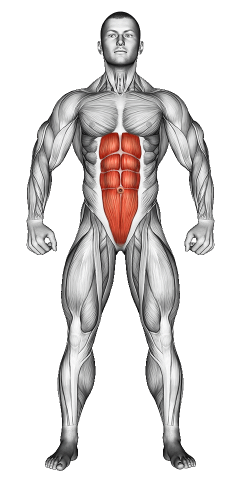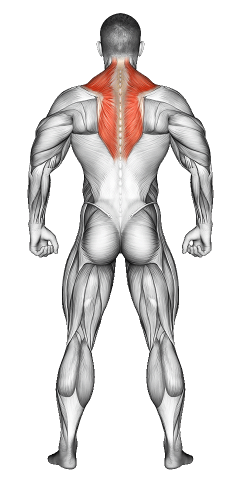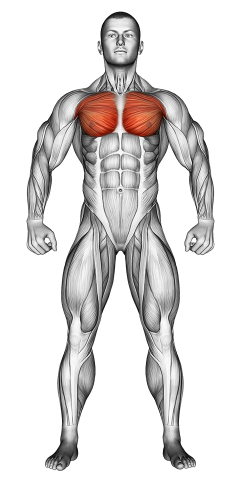Downward Dog Push Ups: Video Tutorial & Exercise Guide

Written By: Claude Michael
Updated: Oct 13, 2024
| Workout | Downward Dog Push Ups |
| Primary Muscle Group | Abs |
| Secondary Muscle Group | Shoulders, Chest |
| Equipment Required | Bodyweight |
| Force Type | Push |
| Mechanics | Compound |
| Exercise Type | Strength |
| Difficulty | Intermediate |
Downward Dog Push Ups: Video Tutorial & Exercise Guide
- 1.Downward Dog Push Ups: Muscle Groups
- -1.1Primary Muscle Group
- -1.2Secondary Muscle Group
- 2.Downward Dog Push Ups: Step-by-Step Guide
- 3.Downward Dog Push Ups: Overview
- 4.Downward Dog Push Ups: Benefits
- 5.Downward Dog Push Ups: Pro Tips & Advanced Techniques
- 6.Downward Dog Push Ups: Progression Plan
- 7.Downward Dog Push Ups: Frequently Asked Questions (FAQs)
Downward Dog Push-Ups: Step-by-Step Guide
- Step 1: Start in a downward dog position with your hands shoulder-width apart and your hips raised towards the ceiling, creating an inverted "V" shape with your body.
- Step 2: Engage your core, and bend your elbows as you lower your head toward the floor, focusing on bringing your forehead as close as possible.
- Step 3: Once your head is near the ground, press through your palms and push your body back up into the starting position, maintaining control and form.
- Step 4: Keep your shoulders active throughout the movement, and make sure to inhale as you lower and exhale as you push back up.
- Step 5: Repeat for the desired number of reps, maintaining proper form to avoid putting unnecessary strain on your shoulders.
Downward Dog Push-Ups: Overview
Downward Dog Push-Ups are a bodyweight exercise combining the benefits of the downward dog yoga pose with traditional push-ups. This move is excellent for working the shoulders, upper back, and core, while improving flexibility and mobility in the hamstrings and calves.
This exercise is great for both beginners and advanced fitness enthusiasts, offering a full-body challenge that also enhances shoulder stability and upper body strength.
Downward Dog Push-Ups: Benefits
Downward Dog Push-Ups are excellent for strengthening your shoulders, arms, and upper back. This movement helps to increase shoulder mobility and stability, making it a great exercise for improving overhead strength.
The downward dog component stretches your hamstrings, calves, and lower back, helping to improve overall flexibility. This combination of strength and mobility makes it a versatile move for your upper-body workout routine.
This exercise also engages your core muscles, which helps with balance and overall stability, improving posture over time.
Downward Dog Push-Ups: Pro Tips & Advanced Techniques
To maximize the benefits of Downward Dog Push-Ups, keep your movements slow and controlled. Focus on engaging your core and shoulder muscles as you press up. You can make the exercise more challenging by increasing the range of motion, lowering your head as close to the floor as possible. Ready to boost your shoulder strength and flexibility? Let’s dive into Downward Dog Push-Ups.
Downward Dog Push-Ups: Progression Plan
Beginner
Intermediate
Advanced
Downward Dog Push Ups: Frequently Asked Questions (FAQs)
What muscles do Downward Dog Push-Ups target?
+Downward Dog Push-Ups primarily target the shoulders, upper back, and core, while also engaging the hamstrings and calves through the downward dog pose.
How are Downward Dog Push-Ups different from regular push-ups?
+Downward Dog Push-Ups focus more on shoulder mobility and upper back strength compared to regular push-ups, which primarily target the chest and triceps.
Is this exercise suitable for beginners?
+Yes, beginners can start with fewer reps and a smaller range of motion. As they gain strength, they can gradually increase the difficulty.
How often should I include Downward Dog Push-Ups in my routine?
+Incorporate them into your routine 1-2 times per week for upper body strength and flexibility. Pair them with other shoulder exercises for balanced development.
What common mistakes should I avoid?
+Avoid rushing through the movements and arching your back excessively. Focus on maintaining proper alignment and control throughout the exercise.
Share
Don’t Wish for It, Work for It – Join the FlexXP Newsletter Today!
Thank you for signing up for the FlexXP Newsletter!
This site is protected and the Google Privacy Policy and Terms of Service apply.


